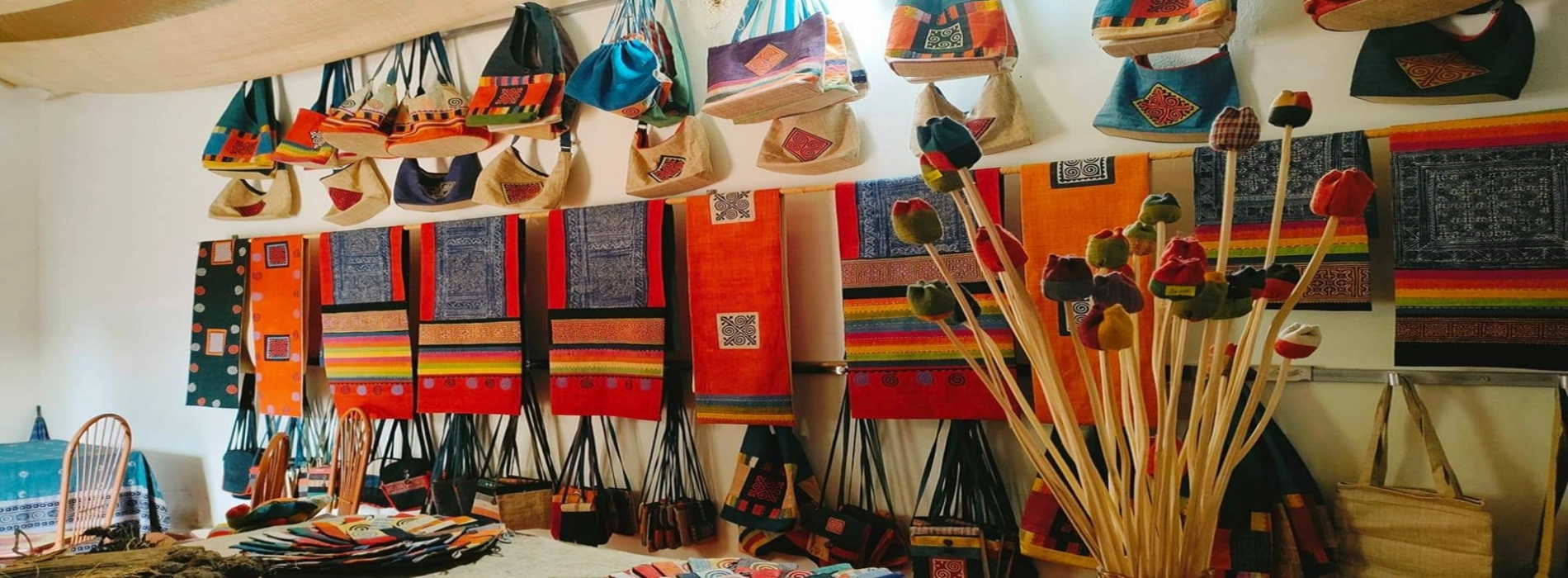
Vietnam has countless craft villages throughout the country. Skilled hands create seemingly simple but delicate items. Initially, it was simply a way to earn money, but since tourism development, foreign tourists have been eager to buy them as souvenirs. Handicrafts carry the country's spirit, allowing tourists to bring them home as gifts to their loved ones, saying "I had a wonderful trip to Vietnam and I want to share it with you."

Vietnamese people often say a gift is a whole heart. Photo: Chus
However, many first-timers are unfamiliar with local pricing. While the overall cost of living in Vietnam is lower than in many Western countries, Vietnam souvenir prices are hard to determine. Unfortunately, some vendors may try to overcharge unsuspecting tourists. To help you avoid trouble, Asia King Travel has compiled a list of popular souvenirs and their estimated price in Vietnam.
Just as Korea has Hanbok and Japan has Kimono, Vietnam’s national treasure is the graceful Ao Dai. Not every country has a traditional garment that is both modest and alluring, adding elegance to the wearer. As a result, it has played a significant role in promoting Vietnamese tourism. Female tourists often choose the Ao Dai as their favorite souvenir.
Traditional Ao Dai is made from silk. High-quality silk is soft, cool, wrinkle-resistant, and odorless. Silk production is a time-consuming and laborious process. In Vietnamese silk villages, silkworms are fed mulberry leaves, the silk threads are carefully unwound from the cocoons and woven into fabric all by hand. Due to these, silk always has a premium price.

An Ao Dai tailor shop in Hoi An. Photo: MIA
Ao Dai and other silk products are available at their best quality in Hang Gai Street (Hanoi Old Quarter) and Hoi An Ancient Town. You can buy one to wear on special occasions or display it as an art piece in your home. Silk fabric typically costs between VND 200,000 and 400,000 ($8 to $16) per meter. Be satisfied if slightly higher.
Handwoven textiles have an undeniable allure for foreign visitors. Witnessing an ethnic minority person embroidering intricate patterns is a rare sight in their home countries. Vietnam's diverse ethnic groups have given rise to a rich tapestry of traditional textiles. These simple yet rustic items often carry deep cultural significance and are relatively affordable, ranging from around VND 50,000 ($2) for a purse to about VND 250,000 ($10) for a pair of pants or a shirt.
Countless bamboo weaving villages appear from the mountains to the coast of Vietnam. Each region produces unique items that reflect their daily lives. Highland ethnic groups create back baskets for carrying supplies on their farm trips. Meanwhile, coastal fishermen craft incredibly efficient fishing tools. Interestingly, people in the Mekong Delta region utilize abundant water hyacinth as a substitute for bamboo.

A simple item can elevate the elegance of your home. Photo: Sao Viet Design
Bamboo craft in Vietnam has been thriving for millennia. In today's globalized world, these products have gained immense popularity among foreigners, especially those from Western countries. Bamboo products are crafted entirely from natural materials and offer a comfortable and eco-friendly experience.
Bamboo products are both practical and affordable. They are durable, easy to use, and can add a touch of elegance to any home. Prices range from VND 100,000 to 300,000 ($4 ~ $12) for trays, baskets, and hampers. Invest VND 2 million ($80) or more for a furniture set that can elevate your home’s aesthetic.
A trip to Vietnam is a must for any coffee enthusiast. Vietnam is the world’s largest coffee exporter and they know how to raise the bar of coffee enjoy. international politicians and world-famous celebrities showered Vietnamese coffee. Sure these compliments are not just polite words.
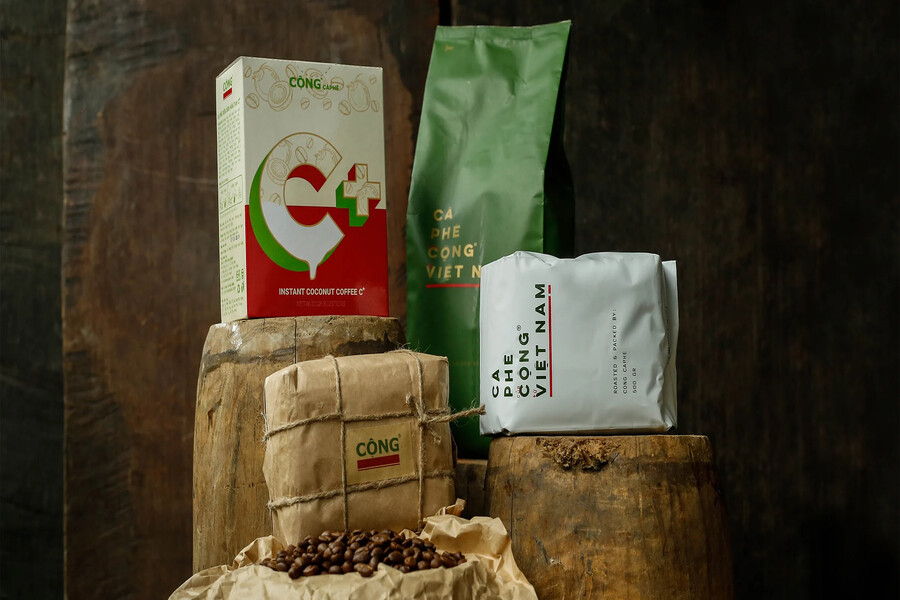
You can wake up to the delightful taste of Vietnamese coffee every day at home. Photo: Cong Ca Phe
You'll be spoiled for choice coffee on local brands or international trademarks, all guaranteed a delicious brew. A 500-gram bag of coffee can range from VND 200,000 to 1,000,000 ($8 ~ $ 40) depending on the type and quality. But one simply won't be enough!
Due to Vietnam's hot, humid tropical monsoon climate, farmers have ingeniously created conical hats to protect themselves from the sun and rain. Over time, these hats have become iconic symbols of rural Vietnam and its simple, honest people. You can purchase one from a street vendor for less than a dollar to support local artisans and bring a piece of Vietnam home.
These one-of-a-kind folk paintings depict scenes from Vietnamese rural life, folklore, and mythology. Dong Ho paintings are popular during Tet and perfect for home decorating. Artisans have mastered using natural materials to create vibrant colors.

A standout and eye-catching decorative accessory. Photo: Wedo
As artisans must meticulously apply multiple layers of color, creating a Dong Ho painting is quite time-consuming. Therefore, even a small-sized painting can cost around VND 200,000 ($4). The price can be more than ten times higher for a set of four. Hanging a few Dong Ho paintings will impress your guests and show your artistic taste.
Do you know why Vietnamese cuisine is so beloved? The unique spices have played a big role. These natural ingredients create flavors you won't find anywhere else. They bring out the authentic flavors of the dishes and are free of harmful additives. And the best part? They're not only healthy but also affordable. You can get a bottle of local spices or fish sauce for just around $3.
Vietnamese specialties reflect the cultural identity of each region. This has made Vietnamese cuisine one of the biggest draws for international tourists. With a long history and diverse geography, the delicacies of each region possess distinctive characteristics that set them apart. Just by traveling to a different province, you can savor a unique specialty you won't find anywhere else.
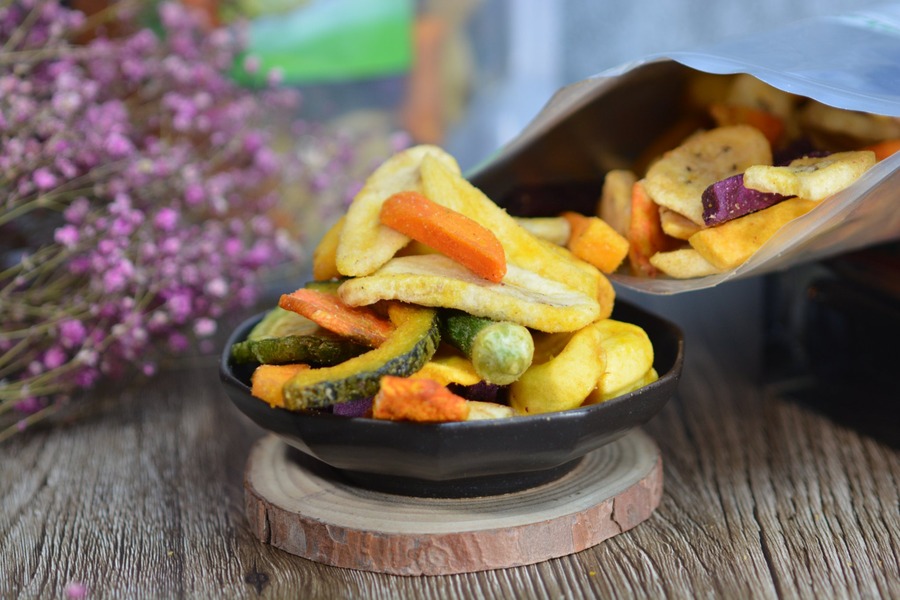
Both Vietnamese people and tourists love to buy dried fruits as snacks. Photo: Dac san Da Lat
Pick up some extra goodies to take home as Vietnamese gifts to relatives or for later enjoyment. Look for dried foods like meat, fish, fruits, and tea to store for a long time. They're usually sold by weight, so you can buy as much or as little as you like. A budget of VND 100,000 ($4) for snacks or 300,000 ($12) for specialty items should be plenty.
Suggested for you: The best Vietnamese souvenirs that you should buy
To make the most of your trip, research your destination thoroughly. This includes where you'll stay, how you'll get around, what you'll eat, and the general cost of living. With such a detailed plan, you are better prepared and avoid surprises. Online travel forums are a great resource for information. A little planning goes a long way.
During holidays, many shops and restaurants in tourist areas tend to be more expensive. To save money and experience local life, look around for smaller, more casual sites. You'll find quality goods at where local people are likely to visit.
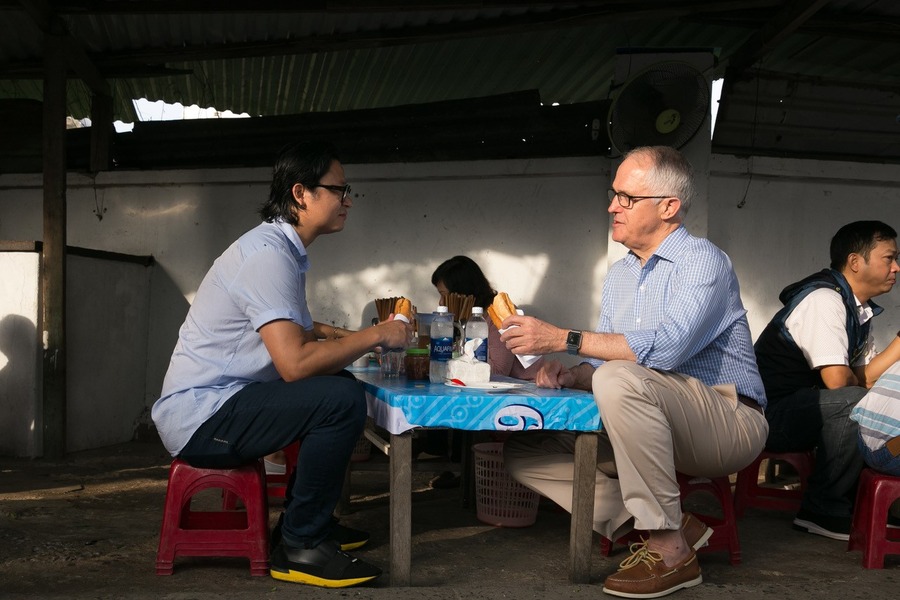
Get to know the locals and they'll take you to hidden gems you won't find online. Photo: Australia Embassy in Vietnam
Bargaining is a normal part of the shopping experience in Vietnam. “Gentlemen” tourists may feel hesitant to haggle and end up paying more. If not careful, you might end up overpaying and feeling cheated.
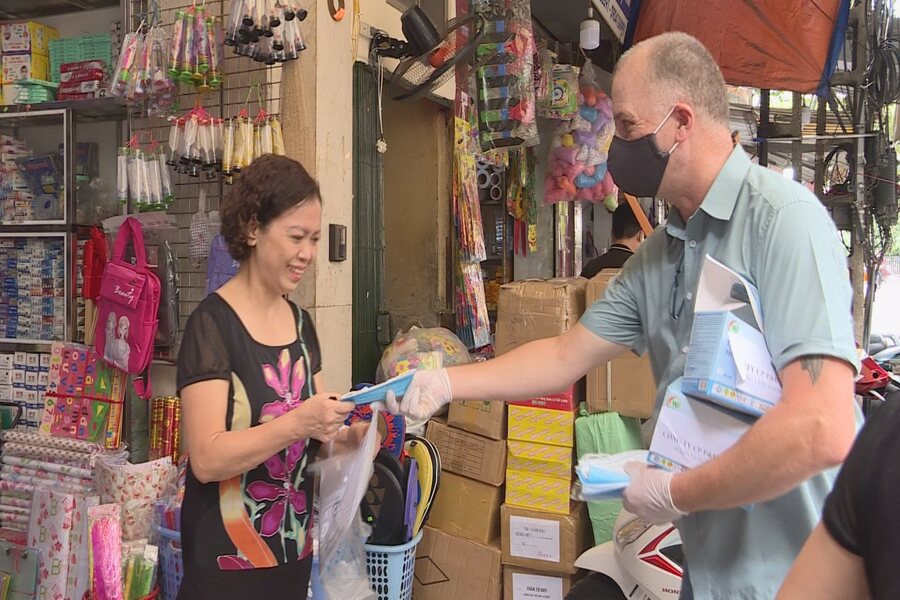
Sometimes, shop owners tend to overcharge you just to have a friendly chat. Photo: Luat Minh Khue
A good rule of thumb is to start by offering half the initial price and work your way up from there but always keep the exchange polite. In some places, you can negotiate down by 50-70%, while a 10-20% discount is more typical in others.
Before ordering, always check the menu and prices. If they aren't listed, you must ask the staff immediately. Additionally, choose dishes relevant to the area. For instance, seafood is a great choice if you're by the coast, not forest meat.
.jpg)
For a hassle-free shopping experience, stick to stores with fixed prices. Photo: The gioi tiep thi
Be cautious when reviewing your bill as mistakes can happen, even in big restaurants. Some might try to overcharge you by adding items you didn't order. Always remember what you bought and show the evidence.
Many overcharged tourists choose to stay silent to avoid confrontation in strange places. To protect yourself, keep the emergency hotline numbers of local authorities handy. If you encounter any problems, you can contact them for assistance. Remember to keep the Vietnamese police emergency number (113) in mind.
Bringing back some Vietnam souvenirs is a great way to share your trip with others. The S-shape country has plenty of goods to suit your needs. However, better to be aware when shopping. And we will leave the best tip here: contact Asia King Travel for a wonderful and mind-free journey!
Suggested for you: The best place where you can buy souvenirs in Hanoi